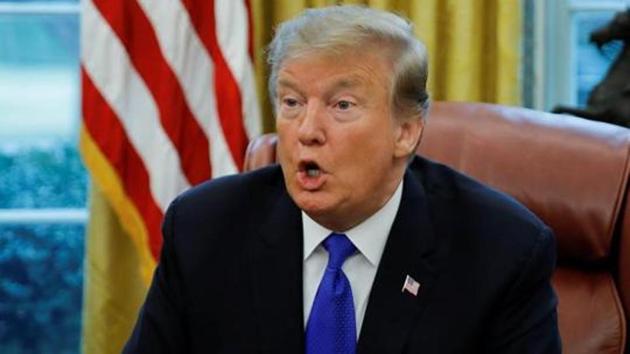Opinion | Trump shouldn’t settle for a bowl of chicken-rice
While Trump also cited issues of intellectual property, technology transfer, currencies and services, agriculture is the area where most clarity is emerging.
Could a banquet of chicken, beef and rice be the solution to the trade tensions between China and the US?

It’s looking increasingly likely. President Donald Trump is extending a deadline for the ongoing trade negotiations after making “substantial progress” during talks in Washington, he said via Twitter on Sunday night in the US
While Trump also cited issues of intellectual property, technology transfer, currencies and services, agriculture is the area where most clarity is emerging. China would buy an additional $30 billion a year of US agricultural produce as part of a deal, people with knowledge of the plan told Bloomberg News last week. Corn, ethanol, beef and poultry have been part of the trade discussions and China could move “relatively quickly” on resuming larger soybean purchases, US Agriculture Secretary Sonny Perdue said Saturday.
While China’s total agriculture imports from the US came to only $24.2 billion in 2017, it’s not hard to see how that ambitious-seeming $30 billion target could be reached, just by taking the brakes off a few products that have struggled in recent years.
Take chicken and beef. China imported about $4.1 billion of beef and poultry in 2017, up almost 90 percent from three years earlier. The US got just $25 million of that total, due mostly to barriers related to mad cow disease that have only recently been removed and others related to avian influenza that have just been imposed. If China were to buy as much as the biggest US import partners for those products – Hong Kong and Japan in the case of frozen and fresh beef, Mexico in the case of poultry – that would already amount to an almost $10 billion increase over current levels.
Next, consider animal feed. Soybeans and dried distillers’ grains are two popular ways for livestock farmers to get additional protein to bulk up their herds, but both have suffered from trade restrictions in recent years. In the three months before Trump’s inauguration, China bought about $8.9 billion of American soybeans; that had fallen to just $117 million in the last quarter of 2018, as a result of levies and unofficial import bans imposed in response to US tariffs.
It’s a similar picture with distillers’ grains, a byproduct of producing corn ethanol. The trade was worth $1.8 billion in the 2014 marketing year, according to the US Grains Council. Because of the impact of a drawn-out anti-dumping investigation, it came to just $44 million in the most recent 12 months. Just restoring these two commodities to their averages before trade restrictions came in would add another $10 billion or so to the total.
There are other areas with potential. Removing barriers to US pork could increase China’s imports by a median of $8.9 billion, according to a study last year by Minghao Li, Wendong Zhang, and Dermot Hayes of Iowa State University. The total increase in major agricultural goods could be a median of $35 billion and as much as $53 billion, they argued.
Our estimates don’t even include serious moves to open up trade in China’s most protected crops – corn, wheat and rice. All three operate under tariff rate quota systems, by which paltry amounts are allowed in with a 1 percent tariff but shipments outside of the quota are subject to a punitive 65 percent rate.
At present, China captures just $506 million of America’s $17.4 billion export trade in these products. Even letting in the full volume of imports allowed under the current regime could be worth another $2 billion or so, although the U.S. might not capture all of that value.
That sounds good as far as it goes, but the problem comes if that’s all on offer. Trump’s tweet promises major progress on intellectual property, technology transfer and services, but we’ve seen vastly less information leaking out of the talks on those areas. Possibly that’s just a sign of the sensitivity of the process. If not, it would go a long way to explaining the split between a deal-focused president and his more hawkish trade advisers.
Trade Representative Robert Lighthizer has always been clear that he’s seeking a deal addressing fundamental structural issues. With China aggressively moving up the technological value chain and seemingly prepared to use market power and outright industrial espionage to get its way, high-tech US businesses that have suffered faltering demand and retaliatory tariffs aren’t likely to be satisfied with a promise to buy more chicken.
President Trump would do well to learn a lesson from Chinese history: Those who bring war to an end by signing unequal treaties are rarely remembered with fondness.
Get Current Updates on India News, Lok Sabha Election 2024 live, Infosys Q4 Results Live, Elections 2024, Election 2024 Date along with Latest News and Top Headlines from India and around the world.



